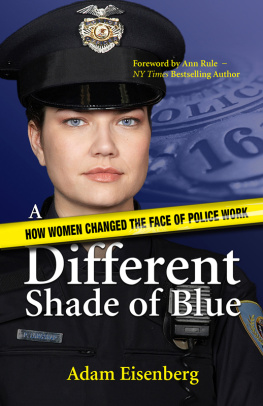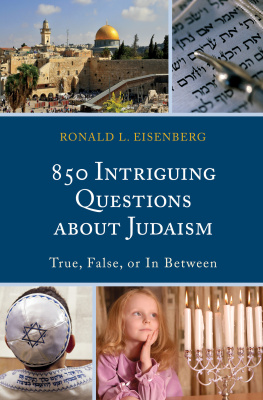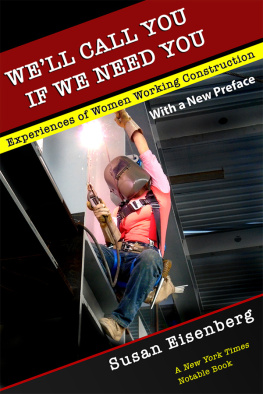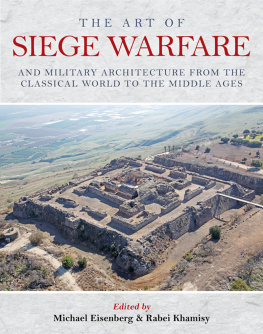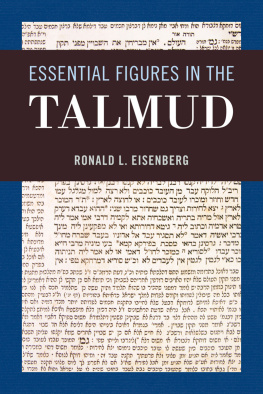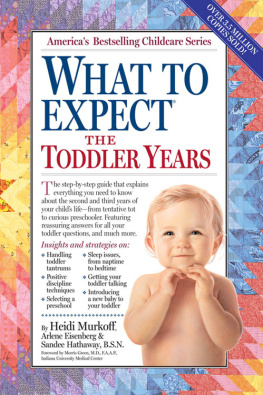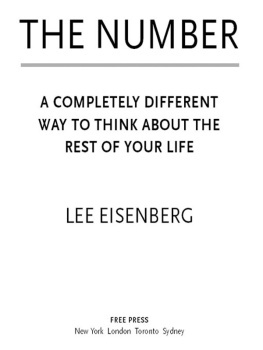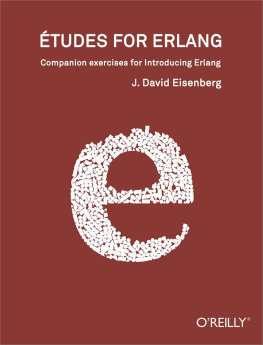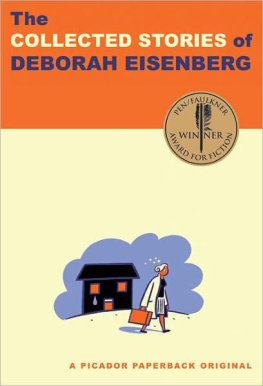Thank you for buying this ebook, published by HachetteDigital.
To receive special offers, bonus content, and news about ourlatest ebooks and apps, sign up for our newsletters.
Copyright 2016 by Lee Eisenberg
Cover concept by Rochelle Udell and Jonathan Caplan
Cover design by Flag
Cover illustration by Serge Bloch
Cover copyright 2016 by Hachette Book Group, Inc.
All rights reserved. In accordance with the U.S. Copyright Act of 1976, the scanning, uploading, and electronic sharing of any part of this book without the permission of the publisher constitute unlawful piracy and theft of the authors intellectual property. If you would like to use material from the book (other than for review purposes), prior written permission must be obtained by contacting the publisher at permissions@hbgusa.com. Thank you for your support of the authors rights.
Twelve
Hachette Book Group
1290 Avenue of the Americas, New York, NY 10104
hachettebookgroup.com
twitter.com/grandcentralpub
First ebook edition: February 2016
Twelve is an imprint of Grand Central Publishing.
The Twelve name and logo are trademarks of Hachette Book Group, Inc.
Bertrand Russells dedication to his wife Edith originally appeared in The Autobiography of Bertrand Russell, Volume 1, published by George Allen and Unwin Ltd., 1967. Reprinted with the permission of Taylor and Francis.
The Meaning in Life Questionnaire appeared in the Journal of Counseling Psychology 53, no. 1 (2006), 8093, and is reprinted with the kind permission of Michael F. Steger.
The Purpose in Life Test was developed by Joseph C. Crumbaugh and Leonard T. Maholick, psychologists at the Bradley Center Inc., Columbus, Georgia. It was introduced in a paper titled An Experimental Study in Existentialism: The Psychometric Approach to Frankls Concept of Noogenic Neurosis, then published in the Journal of Clinical Psychology 20 (April 1964), 200207.
The Death Attitude Profile-Revised: A Multidimensional Measure of Attitudes Towards Death was developed by P. T. P. Wong, G. T. Reker, and G. Gesser, and appeared in R. A. Neimeyer (ed.), Death Anxiety Handbook: Research, Instrumentation, and Application (Washington, DC: Taylor and Francis, 1994). Reprinted by permission of the authors.
The publisher is not responsible for websites (or their content) that are not owned by the publisher.
ISBN 978-1-4555-5047-0
E3
Breaking Eighty:
A Journey Through the Nine Fairways of Hell
The Number:
What Do You Need for the Rest of Your Life, and What Will It Cost?
Shoptimism:
Why the American Consumer Will Keep On Buying No Matter What
In memory of my parents, Eve and George
We invent fictions in order to live somehow the many lives we would like to lead when we barely have one at our disposal.
Mario Vargas Llosa, upon being awarded the Nobel Prize in Literature, 2010
One summer a couple of years ago, my wife, Linda, and I rented a house for several weeks in a small town on Long Island. Being there would allow us to catch up with people we dont see often enough. Experts say that close personal tiesfamily, friends, communityare fundamental to achieving a meaningful life. Given that we happen to live in Chicago, we now and then have to get on a plane to connect with these relationships. Most of our friends are in the East. Our kids, Ned and Katherine, both in their twenties and on their own, live in Brooklyn. The plan was for the kids to come out to Long Island and spend a few weekends.
The house sat on a quiet street, a short stroll to the center of the village, a ten-minute bike ride to the beach. There was, however, an old country graveyard right around the corner, an unexpected bonus. When I walked through the cemeterys iron gates for the first time, I realized Id never visited a graveyard when there wasnt a grim reason to be there.
From day one the graveyard became part of my daily routine. Every morning after breakfast I went over there to jog, concerned at first that tromping through in Nikes and gym shorts was ill-mannered. I made certain to keep to the unpaved lanes separating the plotsa good thing, too, because I later came across this warning in A Curse Against Elegies, a poem by Anne Sexton: Take your foot out of the graveyard, / they are busy being dead.
Its been said that to focus on life we must deprive death of its strangeness. Partly because middle age had swiftly come and gone, partly because summer arrives with long shadows, and mostly because I had a book to write, that became my daytime assignment during those weeks on Long Island: deprive death of its strangeness. After my morning run, I would close myself off in a small spare bedroom with a pile of books that have never made it onto anyones summer-reading list: The Denial of Death; Death and the Rebirth of Psychology; Life Against Death; How We Die; Staring at the Sun: Overcoming the Terror of Death; Being Mortal: Medicine and What Matters in the End. Sounds grim, but it actually wasnt too bad. Ive had worse getaways, such as the time in Scotland when a babysitter hired to look after our son challenged me to a round of golf. Our boy was only two. So was the babysitters handicap. She mercilessly wiped the gorse with me.
When my workday was over, Id restack the books about death and dying and return to the cemetery to unwind. I never once saw another living soul there. Everyone was still busy being dead. I would wander aimlessly until dusk fell. Here was a giant anthology of life stories, every genre imaginable, two hundred years worth, each story distinctly different from all the others. And yet, as if by some ingenious narrative sleight of handeven a director like Robert Altman couldnt have pulled it offevery last story ended up in exactly the same place, this old country graveyard.
Its no exaggeration to say that Ive got stories on the brain. I always have, actually. For a big slice of my career, nearly twenty years of it at Esquire, Ive been up to the eyeballs in stories, fiction and nonfiction, commissioning them, celebrating them when they clicked, mourning them when they fizzled. Later on, I was paid to think about how I could apply storytelling to everything from enriching a school curriculum (at an education start-up) to explaining the wonders of a high-tech down-filled jacket (at a catalog company).
Some of my best friends are stories. Just the other night at a dinner party, I glanced around the table and realized I was in the company of a soap opera, a farce, a chick flick, and an incessantly chatty shaggy dog story with no clue as to where it was going. The farce and the chick flick drank too much, the soap opera sobbed a little, the shaggy dog went on and on. But it turned out to be a surprisingly pleasant eveningthough between you and me there were times I thought it would be better to be home in bed with a good book.


